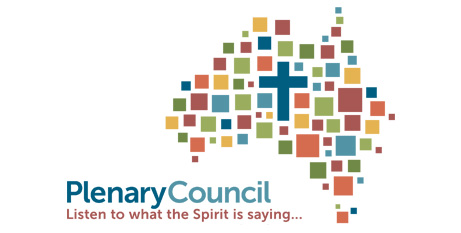 The four-year journey of discernment for the Fifth Plenary Council took a step forward this week, with Council Members invited to reflect on proposals emerging from the Council’s first assembly, held last October.
The four-year journey of discernment for the Fifth Plenary Council took a step forward this week, with Council Members invited to reflect on proposals emerging from the Council’s first assembly, held last October.
Towards the Second Assembly: A Working Document for Members offers a focus for Members’ continuing prayer and reflection, especially during the coming month. It includes proposals drafted as part of the process of preparing resolutions for the Council’s second assembly in July.
The Members will spend the month of March in personal and shared reflection on the document, prepared in four sections by expert writing groups.
Members will then provide their reflections to the Council’s drafting committee, which will work with other Council committees and advisors to revise, refine and consolidate the proposals, in anticipation of their publication several weeks before the second assembly.
Plenary Council vice president Bishop Shane Mackinlay, addressing Members last night, said the document “is something which is a work in progress for Members”.
“It’s not just the work of committees or experts or writing groups,” he said.
“It is the next step in the process we are undertaking together of preparing resolutions for the second assembly of the Plenary Council.
“The contribution of Members over the coming month is critical to this,” Bishop Mackinlay said.
Towards the Second Assembly draws primarily on the “fruits” of the first assembly’s discernment, discussion and contributions, published in December 2021.
The December document articulated the first assembly’s raw proposals, which were later gathered into four themes:
- A Deeper Communion Enriched by Diversity;
- Ecclesial Leadership and Governance – Growing as Disciples and Servants of the Gospel;
- To Witness to Faith, Hope and Love as Missionary Disciples in the World;
- To Proclaim God’s New Creation as People of Prayer, Healing and Hope.
“Towards the Second Assembly shows further movement of the Spirit; it emerges from discussion, reflection, shared prayer and collaborative writing,” Bishop Mackinlay explained.
“It moves forward ideas from the earlier documents, gently reshaping or clarifying them.”
Each section is based on one of the four themes, and begins with scriptural and theological background for its focus and then offers possibilities for consideration.
Members have also received a resource to guide them through a process of individual prayer and reflection and, if possible, a spiritual conversation as part of a small group. The final step in the reflective process invites Members to make a submission to the drafting committee, based on the fruits of their prayer and reflection.
That input will be an essential component for the continued reshaping of the work remaining before the final propositions are ready for discernment and decision at the second assembly.
“The Steering Committee entrusts this ongoing process to the Holy Spirit and looks forward to the fruits of the Members’ discernment during March,” Bishop Mackinlay said.
Bishop Mackinlay asked the Catholic community to continue to lift up the Plenary Council and its Members in prayer, “which has been a driving force behind our four-year journey”.
Find out more about the Plenary Council at www.plenarycouncil.catholic.org.au

This ACBC media blog reports that Plenary Council Members are to spend the month of March individually and in groups reflecting on a working document (prepared by organiser-appointed writing groups) which draws primarily on the so-called ‘fruits’ of the first assembly, published in December 2021 as ‘First Assembly Proposals from Small Groups and Individual Members’. These published ‘proposals’ of the First Assembly of the Plenary Council of the Australian Catholic Church are neither ‘assembly proposals’ nor ‘fruits’ of the assembly. No matter how genuine the “Members’ continuing prayer and reflection”, the source is flawed in that it has been derived primarily from anonymous individuals; these ‘proposals’ were not even considered by the Plenary Council assembly whose members had been appointed under canon law to identify the ‘sense of faith’ of Australian Catholics, building on contributions from the whole Australian Church over three and a half years. Plenary Council members must ensure that matters to be considered by the Second Assembly are not limited by this flawed process which an only produce a flawed outcome. The first item of business for the Second Assembly of the Plenary Council should be for Plenary Council members to review the resultant flawed Agenda and to extend the Assembly to permit proper consideration of the state of our Church.